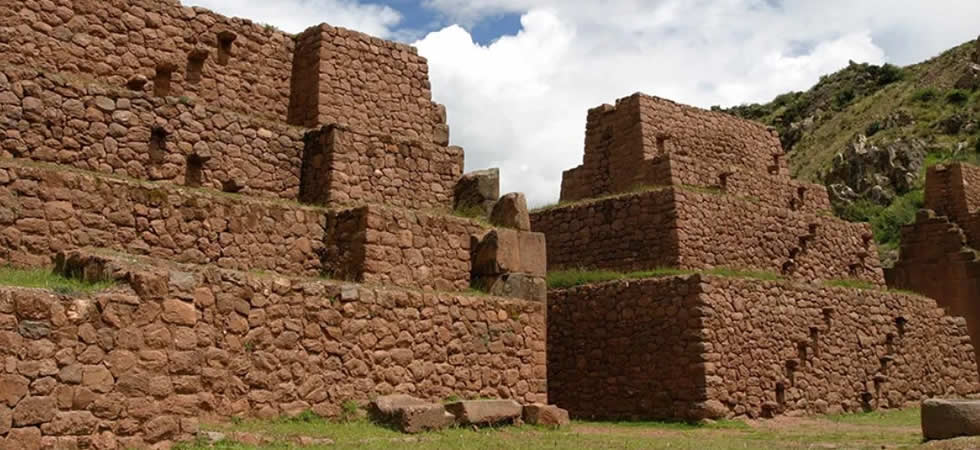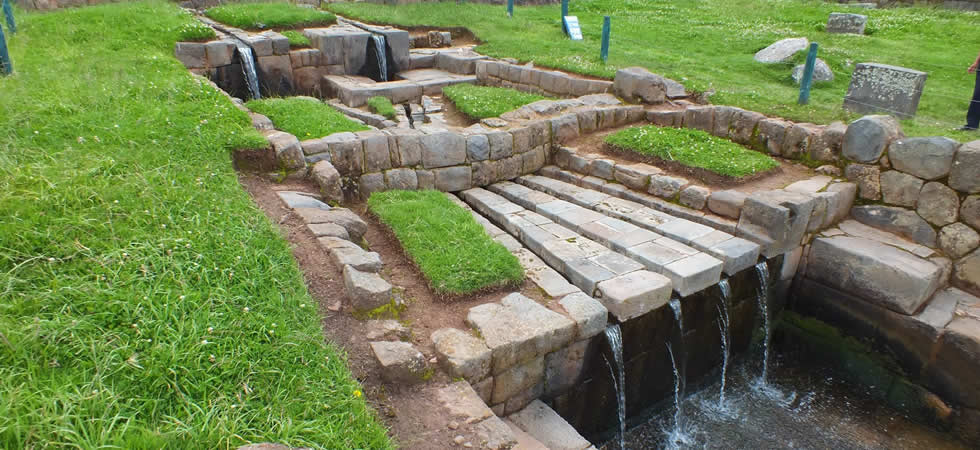The Southern Valley, also known as the Valle Sur (in Spanish), is located in the vicinity of Cusco, offering picturesque landscapes and a rich cultural heritage. The Valley is home to various traditional Andean communities, such as Tipon, Pikillacta, and Andahuaylillas, known for their well-preserved Inca and pre-Inca archaeological sites, colonial churches, and traditional textiles offering a glimpse into the ancient culture and history of the region.
The beautiful landscapes include lush green hills, snow-capped mountains, and terraced fields still used for traditional agriculture. The region is also known for its rich biodiversity, with a variety of flora and fauna in the nearby cloud forests and wetlands as the Huasao Wetland.
To get to the Southern Valley, you can take a bus or car from Cusco. The Southern Valley is less visited than the Sacred Valley, which can make it a more authentic experience. You can explore the region on your own or join an organized tour. Many ruins and communities need to be better signposted and might require a guide to understand and appreciate them entirely.
Andahuaylillas Cusco Peru
Andahuaylillas is part of the Southern Valley and is known for its picturesque landscapes and rich cultural heritage. It is home to a well-preserved colonial church, the Church of San Pedro Apóstol, also known as the "Sistine Chapel of America" due to its ornate Baroque decoration and frescoes.
Inside the church, you will see intricate frescoes, gold leaf, and colorful oil paintings that depict religious scenes and biblical stories. The church also boasts a beautiful collection of religious art and artifacts.
Andahuaylillas is surrounded by lush green hills, with many houses and buildings constructed from adobe and stone. The distance from Cusco is about 60km, and it is easy to get there by public transportation or car. It's a good option for those who want to 'escape the crowds' of the Sacred Valley and get a glimpse of the rural life of the Andean people. It's also interesting for those who want to learn more about the colonial period in Peru.

Andahuaylillas Cusco Peru
Pikillacta
Pikillacta is an archaeological site located in the Southern Valley of Cusco, Peru. The site is believed to have been built by the Wari culture, which flourished in the region between 600 and 900 AD and predates the Inca civilization. The site is considered one of the most important Wari settlements in the region and offers a glimpse into the culture and history of the Wari people.
Pikillacta is a large complex of stone and adobe buildings, including residential and administrative structures, as well as religious and ceremonial buildings. The site covers an area of over 700 hectares and is thought to have been home to around 10,000 people. The architecture of the site is characterized by the use of straight lines and geometric shapes, and it's considered a good example of Wari's architectural skills.
The site of Pikillacta is said to have played an important role in the Wari's religious and administrative activities. The main temple, known as the Temple of the Sun, is thought to have been used for religious ceremonies and offerings to the Wari's gods. The site also has several residential and administrative buildings, which were likely used by the Wari elite.
Pikillacta is located about 60km from Cusco and is relatively easy to get to by car or by public transportation.

Pikillacta Cusco Peru
Tipon
Another archaeological site in the Southern Valley is Tipón, built between the 15th and 16th centuries AD by the Inca civilization. Tipón is considered one of the region's most important Inca agricultural and hydraulic engineering sites and offers a glimpse into the Inca's advanced knowledge of terracing, irrigation, and water management.
Tipon is a complex of terraced agricultural fields, canals, and religious and ceremonial structures. The terraces are built on a slope and are used to cultivate crops such as corn, potatoes, and other Andean agricultural products. In addition, the canals were used to channel water from the nearby mountains to the terraces, providing a reliable water supply for the crops.
The site of Tipon is believed to have played an essential role in the Inca's agricultural and religious activities. The main temple, known as the Temple of the Water, is thought to have been used for religious ceremonies and offerings to the Inca's gods. The site also has several residential and administrative buildings, which were likely used by the Inca elite.

Tipon Cusco Peru
Humedal de Huasao
Humedal de Huasao, or the Huasao Wetland, is a wetland located in the Southern Valley nearby Oropesa. It is considered an essential ecosystem for preserving biodiversity and local communities. The swamp is home to various flora and fauna, including many birds, fish, and amphibians.
In the Huasao wetlands, you will also see big wooden sculptures with different figures of animals and fictional characters; this small and fun theme park is popular by the locals. Huasao is famous for being a town of shamans, a tradition from the times of the Incas.
The Huasao Wetland is known for birdwatching. It is home to many bird species, including the Andean coot, the white-tufted grebe, and the Andean goose. Visitors can also find a variety of fish species, such as the Huasao catfish and the Andean minnow, as well as amphibians such as the Andean tree frog.
The wetland is also essential for the local communities in agriculture, fishing, and livestock grazing. You can learn about the traditional agricultural practices and the wetland's importance for the people.

Humedal de Huasao